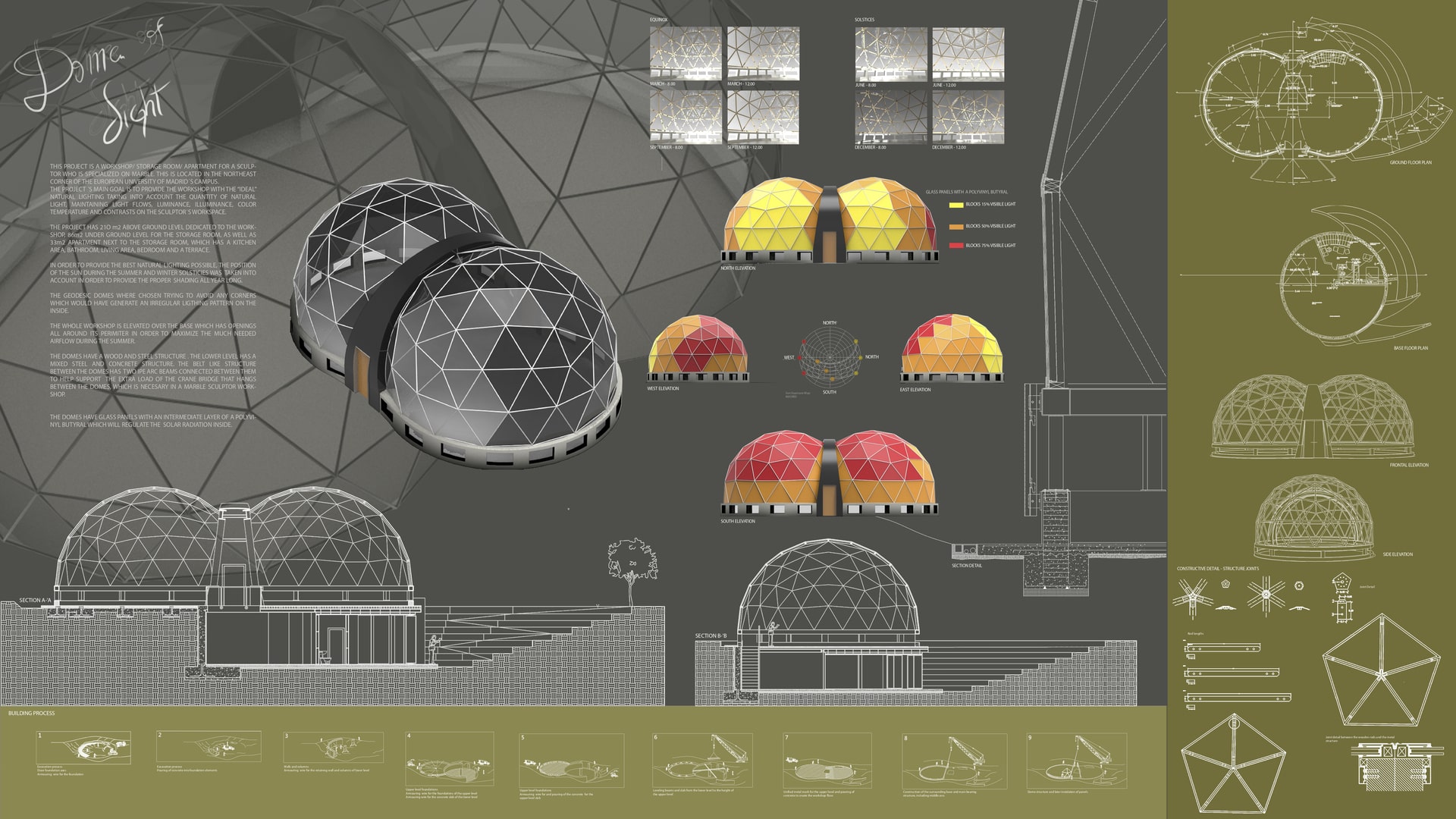Project Description
The main objective of this building is to obtain the best use of natural light possible, trying to ensure that the overhead light is continuous throughout its surface. The premise consists in the development of a workspace for a sculptor with a fairly closed programmatic and structural content, 200 square meters of workspace, free of vertical structural elements, at least 4 meters high, and a free-height warehouse of 3 meters with clears not less than 7 meters long and with a maximum of 100 m2 of surface, which includes a small apartment of 30 m2 that has a kitchen, full bathroom, living area and bedroom. The project is located northeast of the Villaviciosa de Odón campus of the European University of Madrid, where average temperatures vary greatly depending on the seasons, reaching around 0 degrees celsius in the coldest months and passing 30 in the warmest ones. It is also key in the development of this project to take into account the variation in the solar inclination during those months that in Madrid goes from 27 degrees on December 21 (winter solstice) to 73 degrees on June 21 (summer solstice) . This difference in solar incidence is what will later determine the level of opacity of the dome panels. For the sculptor's work area, the main objective is to obtain the best use of natural light possible, trying to ensure that the overhead light is continuous throughout its surface without the need for lighting with artificial light at all. The final design consists of the union of two geodesic domes joined by two arches made of steel profiles which are supported by a half steel circumferences with a concrete base, the domes are type V3 which means it has bars of 3 different measures, which create the pentagons and hexagons that will be built in separate modules for their later union on site, this structure is made up of wooden bars joined by a perimeter steel frame designed with profiles drawn from Velux windows. And lastly, a glass with an intermediate air chamber and a polyvinyl butyral that, depending on each panel, will have more or less opacity. Regarding the location of the building, the Madrid solar chart was analyzed at the proposed coordinates and it was decided to give it an east-west direction in order to take advantage of the largest facades facing north and south, thus maximizing the solar incidence and thus maximizing the amount of light that enters the workshop space. In this way, the sculptor's apartment would be to the east, avoiding overheating that would have to the south and west. The entrances to the building are to the north and south. For the glass panels, an analysis of solar incidence was carried out, and it was decided to divide them into 3 types, using a layer of polyvinyl butyral to limit the amount of light that enters and also regulate the temperature depending on its location, thus obtaining: some panels that block 15% of the exterior light (yellow color), some 50% (orange color) and others 75% (red color); the material was picked in order to keep the environment inside the workspace lit, but climatically pleasant, especially in the late hours of the day and during the summer. A 3D model of the building was introduced in the Velux Day light visualizer which exported 8 images 4 are simulating the equinoxes, march and september at 8 am and at noon. 4 of the two months of the solstices, june and december with the same times as mentioned before. After this analysis the luminance and illuminance margins perceived within the workshop are quite equal. At the bottom of the panel you can see a development step by step of the construction process of the building from the initial excavation to the installation of the glass panels of the dome. In conclusion we could say that this is a project that responds both to the technical requirements of light and temperature of the premise as well as to the programmatic needs of each of the spaces, achieving optimal natural light ilumination.
